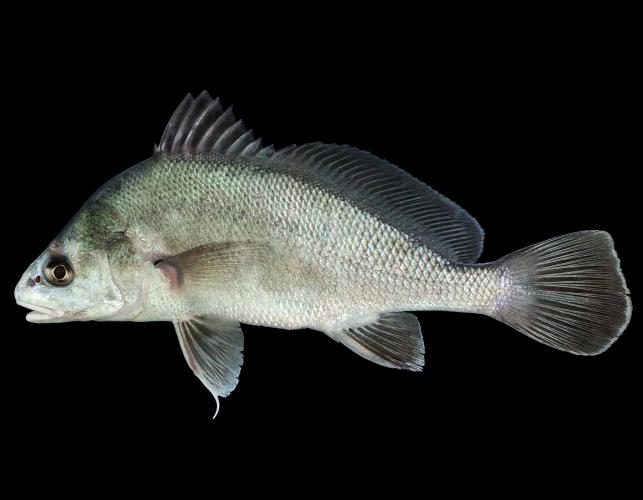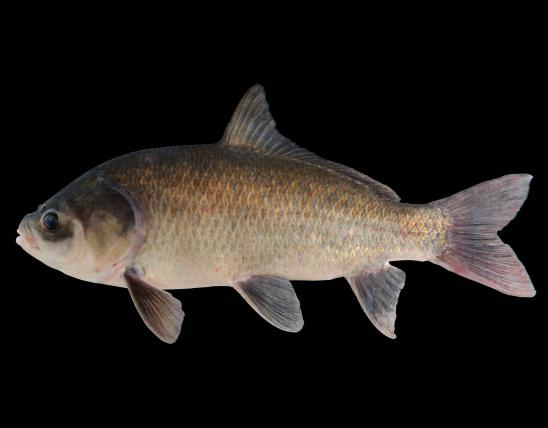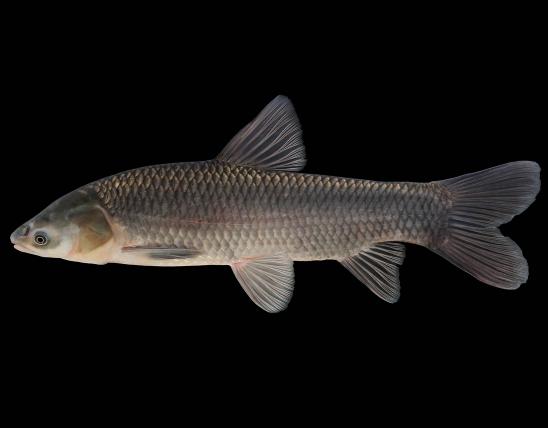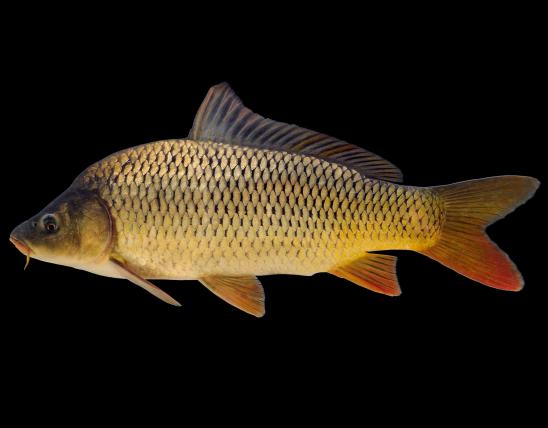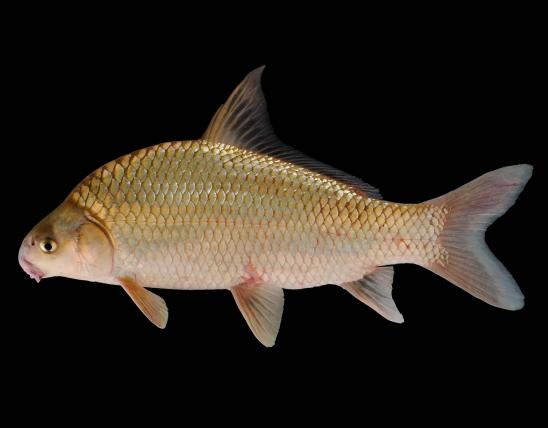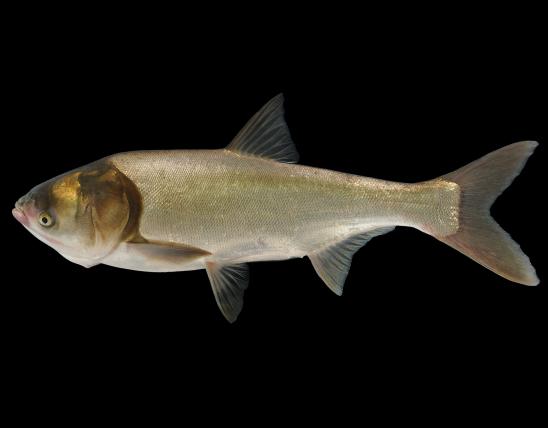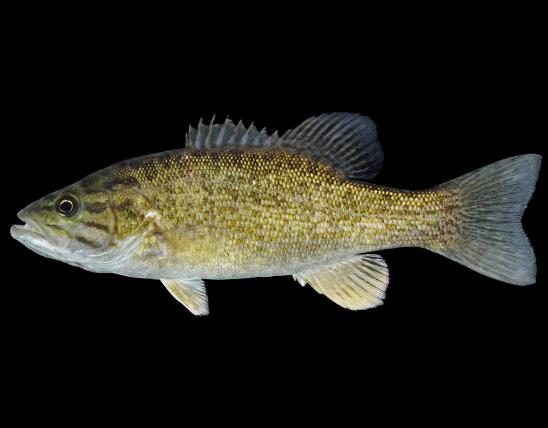
The freshwater drum is a silvery, deep-bodied fish. The head and body slope upward from the snout to the dorsal fins and give the fish a distinct humpbacked appearance. The lips are milky white, and the pelvic fins are white, often tinged with orange. The dorsal fin is long and is divided into two distinct parts.
Total length: 12-20 inches; weight: 12 ounces to 5 pounds; maximum weight (in Missouri) about 40 pounds.

Occurs statewide; most abundant in the Missouri and Mississippi rivers and downstream sections of their larger tributaries.
Habitat and Conservation
Occurs in large rivers, lakes, and impoundments over most of Missouri, usually found in association with sandy or mixed mud-and-sand bottoms. Often found in depths of 30 feet in rivers with larger pools and reservoirs.
Food
Long thought to be a mollusk eater (because of its heavy "throat teeth"), this species actually eats mainly fish, crayfish, and immature aquatic insects. Microcrustaceans and zooplankton are the foods of larval drum, which can also feed on other fish fry because of their unusually large mouths and their ability to roll the ingested fry into a ball.
Status
This species is harvested both commercially and as a sport species.
Life Cycle
Individuals can live for 13 years.
Human Connections
Various groups of Native Americans used the otoliths (ear bones) as jewelry. In the Great Lakes, especially Lake Erie, people walk the beaches looking to collect these otoliths, which they call "lucky stones."
Ecosystem Connections
We humans often don't realize that there are sounds underwater, and animals making them. Drum fish (members of the Sciaenidae, the drum family) get their name from the grunting, croaking, or “drumming” sound they make using specialized muscles associated with the swim bladder. In this species, the sound is thought to be used in mating activities.
